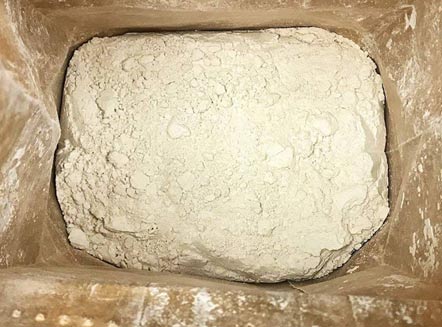
Diatomaceous Earth
Diatomaceous earth is made from the fossilized remains of tiny, aquatic organisms called diatoms. Their skeletons are made of a natural substance called silica. Over a long period of time, diatoms accumulated in the sediment of rivers, streams, lakes, and oceans. Today, silica deposits are mined from these areas.
Silica is very common in nature and makes up 26% of the earth’s crust by weight. Various forms of silica include sand, emerald, quartz, feldspar, mica, clay, asbestos, and glass. Silicon, a component of silica, does not exist naturally in its pure form. It usually reacts with oxygen and water to form silicon dioxide. Silicon dioxide has two naturally occurring forms: crystalline and amorphous. Most diatomaceous earth is made of amorphous silicon dioxide. Figure (1) Shows Diatomaceous Earth.

Fig. (1): Diatomaceous Earth
However, it can contain very low levels of crystalline silicon dioxide. The first pesticide products containing silicon dioxide (diatomaceous earth) were registered in 1960 to kill insects and mites.
Products containing diatomaceous earth are most commonly dusts. Other formulations include wettable powders and pressurized liquids. Currently, there are over 150 products registered for use inside and outside of buildings, farms, gardens, and pet kennels. Some products can also be used directly on dogs and cats.
Diatomaceous earth products are registered for use against bed bugs, cockroaches, crickets, fleas, ticks, spiders, and many other pests. There are thousands of non-pesticide products that contain diatomaceous earth. These include skin care products, toothpastes, foods, beverages, medicines, rubbers, paints, and water filters. The Food & Drug Administration lists diatomaceous earth as “Generally Recognized as Safe”. “Food grade” diatomaceous earth products are purified. They may be used as anticaking materials in feed, or as clarifiers for wine and beer.
Diatomaceous earth is not poisonous; it does not have to be eaten in order to be effective. Diatomaceous earth causes insects to dry out and die by absorbing the oils and fats from the cuticle of the insect’s exoskeleton. Its sharp edges are abrasive, speeding up the process. It remains effective as long as it is kept dry and undisturbed.
